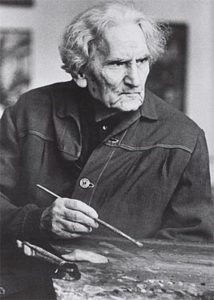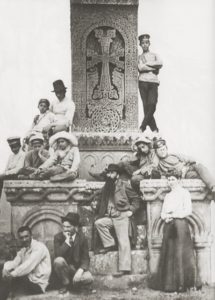
1880 - 1972
Martiros Saryan
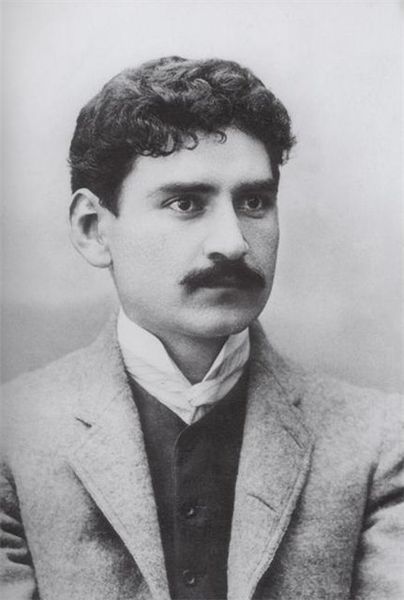
description
Martiros Sergeevich (Sarkisovich) Saryan was a Russian and Armenian landscape painter, graphic artist and theater artist.
He was born into an Armenian patriarchal family. In 1897-1904, he passed a course at the Moscow School of Painting, Sculpture and Architecture.
An active participant in the exhibitions of “Blue rose”, The Union of Russian artists, “The World of art”, the magazine “Gold Fleece”, the association “Four Arts”. The founder of the Academy of Arts in Armenia had a title of academician, People’s Artist of the USSR, Hero of social labor, was awarded state prizes. The creativity and activity of M. S. Saryan played a leading role in the formation of the national Armenian school of painting. The House-Museum of Martiros Saryan was opened in Yerevan.
“Nature creates a man, in order to look at itself with its eyes, to enjoy its amazing beauty,” – said the artist about creativity.
Key ideas:
– Even in the first significant watercolor cycle “Tales and Dreams”, M. Saryan achieves unusual plastics and special melody, depicting simple figures of people and animals. The background is multiform with conditional nature. The elements of the compositions, simplified to the limit, activate the imagination, give the sense of harmony of the world and take you into the world of emotional experiences. The craving for the speculative images created on the basis of sensations and real objects is a kind of foundation for the subsequent bold quest.
– The artist applies precisely found harmoniously contrasting tone combinations of rather large color planes. They create spatial plans that are flooded with inner light. Saryan’s colors are not only sonorous, but also luminiferous.
– The paintings created during trips around the Middle East not only bring Egyptian masks and other items of Eastern culture into the plots, but also affirm Saryan in the idea of the immortality of life. Strictly generalized forms of the attributes of antiquity are a living symbol of the mysterious, but eternal, incomprehensible, but incorruptible.
– Over time, the conditional stage construction of portraits is replaced by images of a more specifically real type. That is why the transition from entirely allegorical comparisons of people’s images with symbolic details of compositions (for example, “man-sun” in “Self-portrait”) to solving individual psychological problems is also logical. Instantly and accurately grasping the similarity, Saryan made it a private detail in a symbolic generalization. Hence, there are double names, such as “Young man. Portrait of M. Gulnazaryan ”, where the first is more important for the master.
– Saryan said about himself: “I am a monumentalist. Give me the sun, the light, the color, the general character of nature… Generalization is in the blood of my painting”. Sincerely fascinated by the Impressionists, he quickly realized that his artistic beliefs were opposed to attempts to paint “in details”, in his words, “crumbly”.
– His nature of artistic thinking – painting with large planes of pure unmixed colors, which visually create a generalized characteristic of the forms and plasticity of their movement – Saryan maintained throughout his long and fruitful creative journey.
1880
1901 - 1910
1910
1915 - 1916
1918 - 1921
1926 - 1928
1930
1937
1940 - 1950
1960
1972
The birth of the artist
Made a trip to Armenia
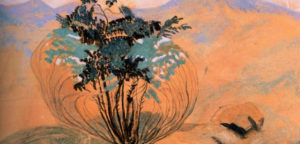
Traveled to Turkey, Egypt and Iran
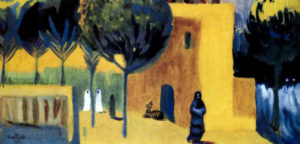
Married Lusik Agayanступил в брак с Лусик Агаян
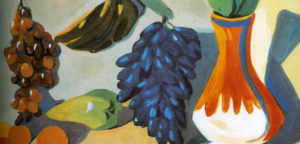
Lived in New Nakhichevan
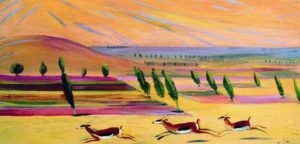
Lived and worked in Paris
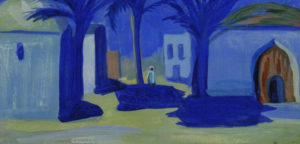
Painted a lot of portraits
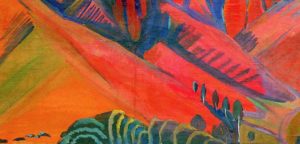
He was awarded the Grand Prix
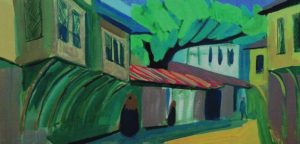
Was a member of the Association of Artists
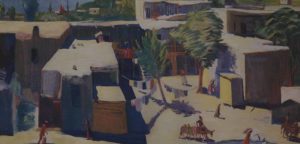
Received a series of high ranks and state awards
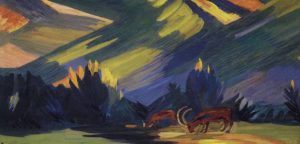
The death of the artist
